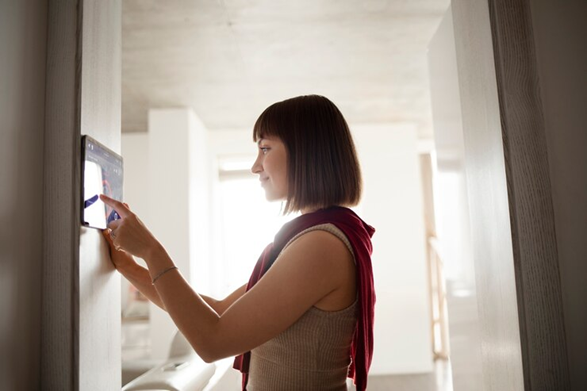When it comes to securing your home or business, a well-installed security alarm system is one of the most effective ways to prevent burglary and other security threats. However, the installation process can be a bit tricky. Whether you’re tackling a DIY project or hiring a professional for security alarm installation, there are several common mistakes that can compromise the performance of your alarm system. In this blog, we’ll highlight some of these errors and provide helpful tips on how to avoid them.
Choosing the Wrong Alarm System for Your Needs
One of the most common mistakes people make when installing a security alarm system is selecting one that doesn’t align with their specific security needs. Different systems offer different features, and not all systems are created equal. For example, if you live in a small apartment, you might not need a complex system designed for a large, multi-floor home. Similarly, business owners should focus on systems that offer features like remote monitoring and integration with security cameras.
Solution:
Before installation, assess your security needs carefully. Consider factors like the size of your property, the number of entry points, your budget, and whether you require extra features like video surveillance or motion sensors. A system that meets your needs will be more effective and efficient.
Improper Placement of Sensors
One of the critical elements of a good security alarm system is the placement of sensors. Motion detectors, door/window sensors, and cameras need to be installed in locations where they will effectively monitor activity. Many people make the mistake of placing sensors in areas that are either too exposed, too hidden, or in locations where they can easily be tampered with.
Solution:
Ensure that sensors are installed in strategic locations—like near entry points, along hallways, and in corners of rooms to avoid blind spots. Make sure motion detectors aren’t facing windows or heat sources that could trigger false alarms. It’s also essential to test the placement before finalizing the installation.
Skipping Professional Help When Necessary
While DIY security alarm systems are a popular choice due to their lower upfront costs, some systems may require a level of expertise for proper installation. Attempting to install a system yourself, without the proper knowledge, can result in faulty wiring, improper sensor placement, or configuration issues that can leave your property vulnerable.
Solution:
If you’re unsure about the technicalities of installing a system, don’t hesitate to bring in a professional. Licensed security system installers are trained to ensure the system works optimally and complies with local regulations. A professional installation also often includes a warranty, which could save you from potential costs down the road.
Ignoring the Need for Regular Testing
Many people forget to test their alarm system after installation, assuming everything is working correctly. However, it’s crucial to regularly test all components, including sensors, cameras, and the connection to the monitoring center. Failing to do so can result in a false sense of security, especially if the system malfunctions without your knowledge.
Solution:
Once your security system is installed, test it thoroughly. Activate each sensor and ensure that the control panel receives the alerts. Check the cameras, if applicable, to ensure they’re recording and providing clear footage. Additionally, schedule regular tests—ideally once a month or after any significant changes—to confirm everything is still functioning correctly.
Overlooking the Need for User Training
It’s common for people to focus on the technical side of alarm system installation but overlook the importance of training everyone in the household or office to use the system correctly. Misunderstanding how to arm, disarm, or reset the system can lead to false alarms, unintentional deactivation, or failure to respond in emergencies.
Solution:
Ensure that everyone who will use the system is trained on how it works. This includes setting the alarm, understanding how to disable it when necessary, and knowing how to respond if an alarm goes off. Many systems come with a user manual or tutorial video that can be very helpful.
Not Considering Future Expansion Needs
While your current security requirements may be minimal, it’s important to think ahead when installing your alarm system. You may not need to add extra sensors or cameras right now, but what about in the future? It’s crucial to plan for scalability so that your system can grow with your security needs.
Solution:
Choose a security alarm system that allows for future upgrades, whether that’s adding additional cameras, sensors, or integrating with other smart home devices. Discuss with the installation provider about how the system can be expanded or upgraded if your needs change.
Failing to Set Up Proper Monitoring and Alerts
Even though the alarm system is important for alerting you to intrusions, many homeowners and business owners fail to set up proper monitoring or alerts that will notify them in case of an emergency. Simply relying on the siren to alert you is often not enough, especially if you’re not home when the break-in occurs.
Solution:
Set up remote monitoring services through your alarm system provider so that you can receive notifications via text or email if an alarm is triggered. Many systems also offer mobile apps that allow you to monitor and control the system from anywhere. Consider adding professional monitoring, where trained security personnel can respond quickly in the event of an emergency.
Inadequate Power Supply and Backup
Alarm systems rely heavily on electricity to function, but many people overlook the importance of ensuring a reliable power supply. If there is a power outage, your alarm system may stop functioning unless you have a backup power source in place. Some systems have battery backups, but they may need to be replaced periodically to ensure they are fully operational during power outages.
Solution:
Check the power supply requirements of your system, and make sure there is a reliable backup battery in place. Test the battery backup to ensure it works in the event of a power failure. Be aware of the lifespan of the battery and replace it as needed to ensure continuous coverage.
Neglecting to Secure the Control Panel
The control panel is the heart of your security system, and if it’s not secured properly, it can be an easy target for burglars. If the control panel is easily accessible or located in a vulnerable spot, intruders may be able to disable the system before it can alert authorities.
Solution:
Place the control panel in a secure, but easily accessible location. Many systems allow you to place the panel out of sight or in a discreet area, which will prevent unauthorized individuals from tampering with it. Additionally, use strong, unique PIN codes and passwords to access and control the system.
Failing to Check for Local Regulations
Some cities or neighborhoods have regulations regarding the installation of security alarm systems, including requirements for permits or notifications to local authorities. Not adhering to these regulations can result in fines or the system being disarmed by the authorities.
Solution:
Before installing an alarm system, check with your local authorities to ensure you comply with all regulations. This could include obtaining a permit or notifying the police department if your system is connected to a monitoring service. Understanding the local laws can help you avoid potential legal issues.
Conclusion
Installing a security alarm system is a major step in protecting your home or business. By avoiding these common mistakes, you can ensure that your alarm system functions effectively and provides the level of protection you expect. Whether you’re installing it yourself or hiring a professional, careful planning, proper placement, and regular maintenance will ensure that your system continues to safeguard your property for years to come.





